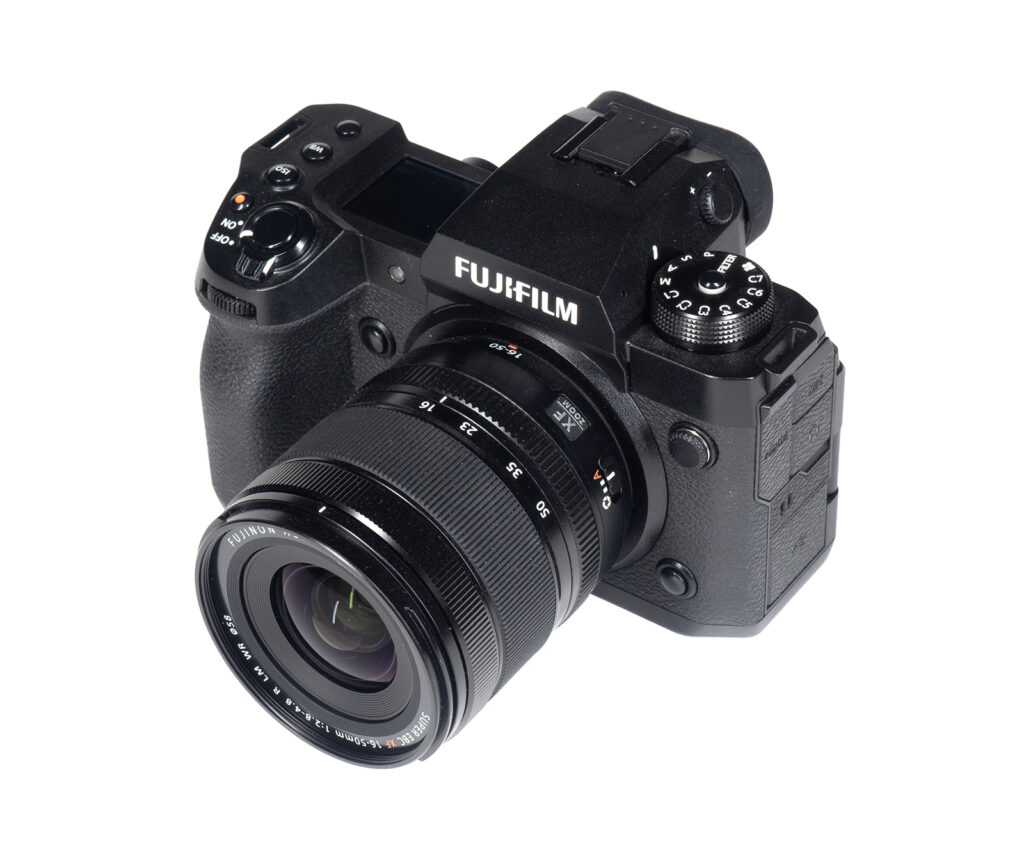The Fujinon XF 18-55mm f/2.8-4 R LM OIS has had quite a run since its release in 2012 (!). It was widely regarded as one of the most desirable “kit” lenses on the market. You may debate the correctness of the classification as a “normal” kit lens here because Fujifilm has a couple of other really cheap kit lenses for their budget cameras, but regardless, it is/was a very reasonably priced lens while also being fairly fast, and it even comes with an optical image stabilizer. However, the lens was released at a time when 16 megapixels was the Fujifilm standard. Nowadays, most current models use a 40-megapixel sensor. Consequently, Fujifilm had to up their game a little bit with the new Fujinon XF 16-50mm f/2.8-4.8 R LM WR. But then again – did they really up their game? While a bit wider, you lose 5mm at the long, and it’s also a fair bit slower at longer settings – and the OIS is gone. So, let’s see how it goes …
In terms of mechanical quality, the XF 16-50mm f/2.8-4.8 R LM WR does certainly show progress. Other than the added weather sealing (dust-proof, drip-proof, freeze-proof down to -10C), it uses an internal zoom mechanism, which should be good for long-term reliability. Extending zoom lenses tend to deteriorate a bit over time with respect to optical alignment (centering). Consequently, the zoom ring also has a very even action across the range. While lightweight at just 240g and very compact, the lens still feels solid. The aperture can be controlled both on the lens as well as via the camera. A petal-shaped lens hood is part of the package.
As mentioned in the lens name, the AF uses an LM (=”Linear Motor”). It is both fast and near silent. Manual focusing via the rubberized focus ring works, as usual, “by wire”.

| Specifications | |
|---|---|
| Optical construction | 11 elements in 9 groups (3x aspherical, 3x ED) |
| Number of aperture blades | 9 (rounded) |
| min. focus distance | 0.24m (max magnification 1:3.3) |
| Dimensions | φ65×71.4mm |
| Weight | 240g |
| Filter size | φ58mm |
| Hood | petal-shaped (bayonet mount, supplied) |
| Other features | weather-sealing, internal zooming |
Distortions
Just like most lenses for mirrorless cameras, the Fujinon isn’t fully corrected with respect to image distortion. However, it is still better corrected than most. In RAW images, there is, of course, a heavy barrel distortion at 16mm, but at 4.6%, it isn’t insanely high. As usual, the distortion type switches to pincushion-style at longer focal lengths. At 50mm, it reaches 1.7%, which is noticeable in images with straight lines.
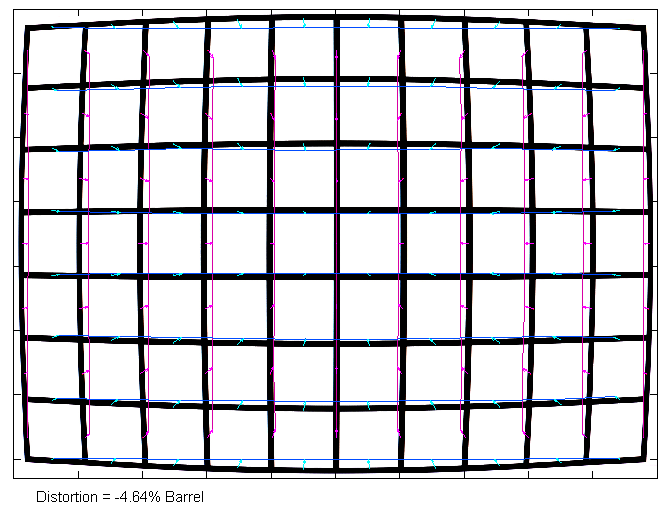

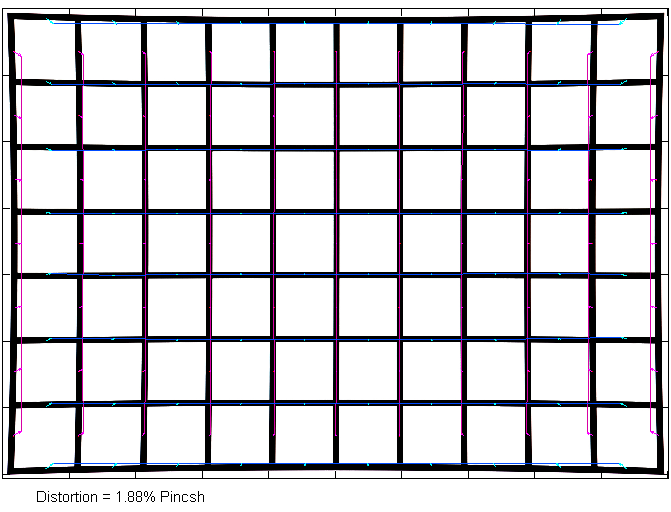
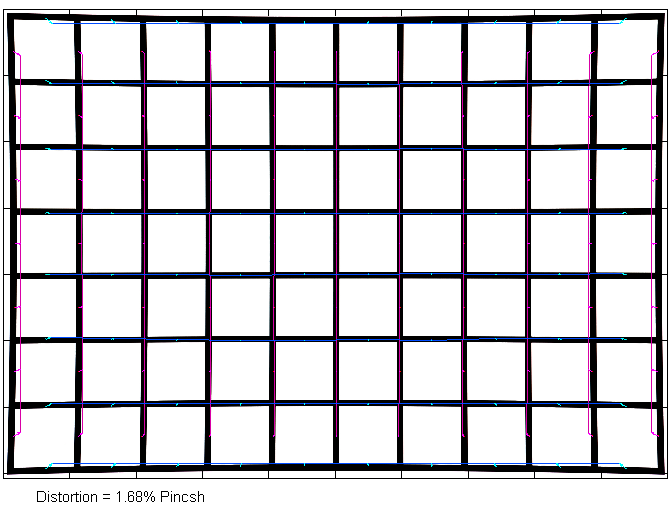
Of course, this is different with activated auto-correction, which reduces the issue down to minimal levels.
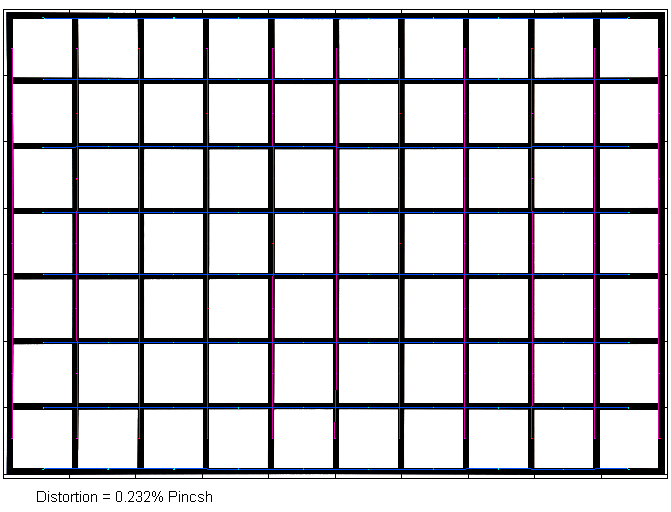
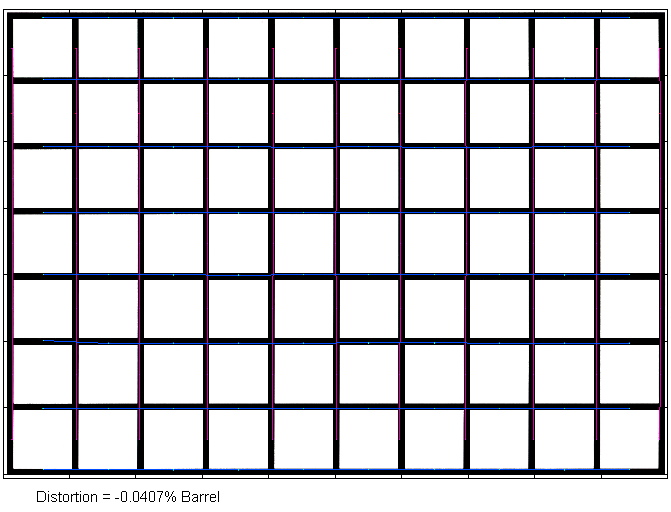
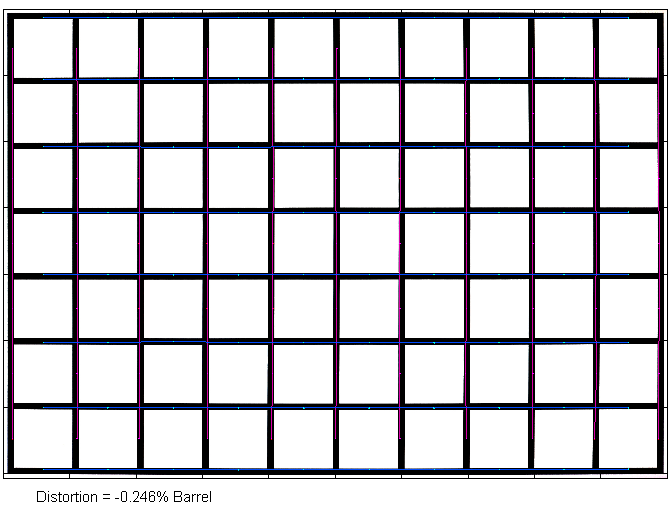
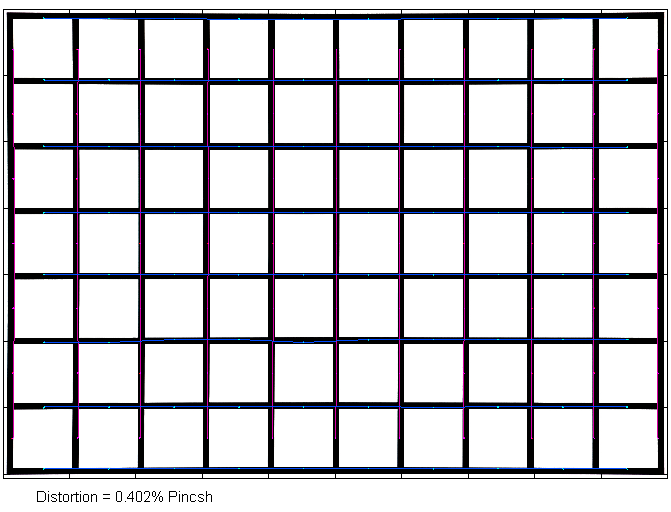
Vignetting
The RAW vignetting is high at 16mm f/2.8 – at least within the APS-C scope (similar full-format lenses tend to exhibit much higher vignetting). Stopping down helps, but you can still spot some moderate light falloff at f/8.
The vignetting is less pronounced at longer focal lengths.
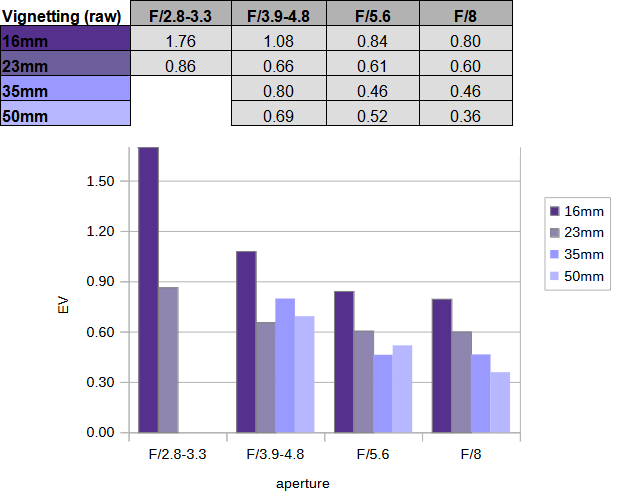
Once again, activated auto-correction fixes the high vignetting. Other than somewhat increased sensor noise in the image corners, there’s little to complain about in this case – even at 16mm.
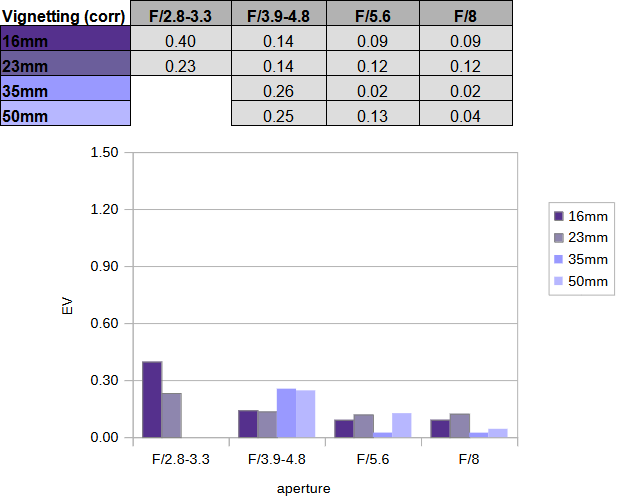
MTF (resolution) at 26 megapixels
The Fujinon XF 16-50mm f/2.8-4.8 R LM WR delivers a solid performance across the zoom range here. At 16mm and 23mm, the image center is already excellent at max. aperture, and the outer image field is very good until f/11 where diffraction has a noticeable impact. The quality is a bit reduced at 35mm and somewhat more so at 50mm. However, the lens remains reasonably sharp – at least on 26-megapixel sensors. Expect slightly softer results on 40mp cameras, though.
The centering quality of the tested sample was poor when we received it but good after a repair by Fujifilm.
Please note that the MTF results are not directly comparable across the different systems!
Below is a simplified summary of the formal findings. The chart shows line widths per picture height (LW/PH) which can be taken as a measure of sharpness. If you want to know more about the MTF50 figures, you may check out the corresponding Imatest Explanations.

Field Curvature
While the results in the previous chapter were pretty good overall, there’s one caveat – field curvature. Ideally, a lens has a flat focus plane. If it isn’t, you may end up with some softness in the image corners. The Fujinon has this issue at wide focal lengths.
Field curvature is difficult to quantity. Below is an ATTEMPT to illustrate it in an MTF graph. You may notice that on a flat plane, the corners aren’t quite as good at f/2.8 and f/4 anymore. The increased depth-of-field catches up from about f/5.6, though. However, keep in mind that you rarely use a large aperture at 16mm if you want to maximize the sharpness across the image anyway – and for shallow depth-of-field, field curvature is rather irrelevant anyway.
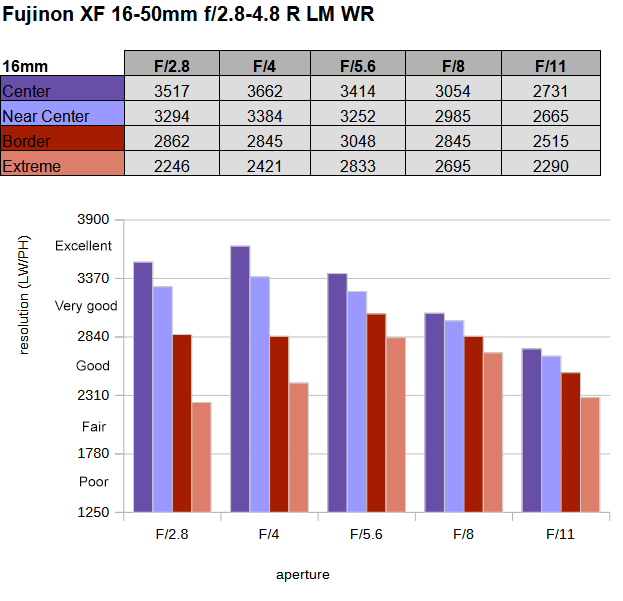
Chromatic Aberrations (CAs)
Lateral CAs stay mostly below 1px on average at the image borders. This is moderate, even without auto-correction.

Bokeh
The Fujinon XF 16-50mm f/2.8-4.8 R LM WR may “appear” to be reasonably fast. However, when translating this to full format, we are talking about a “24-75mm f/4.2-7.2” lens here. It should be rather obvious that this lens can’t be a bokeh star just based on these specs. Even so – shallow depth-of-field images are possible to some degree, so let’s take a look at what the lens can do for us here (at 50mm).
Out-of-focus highlights are circular at f/4.8. However, the inner zone of the discs is a bit nervous, and there’s a bit of outlining at the edges, which is getting emphasized when stopping down.
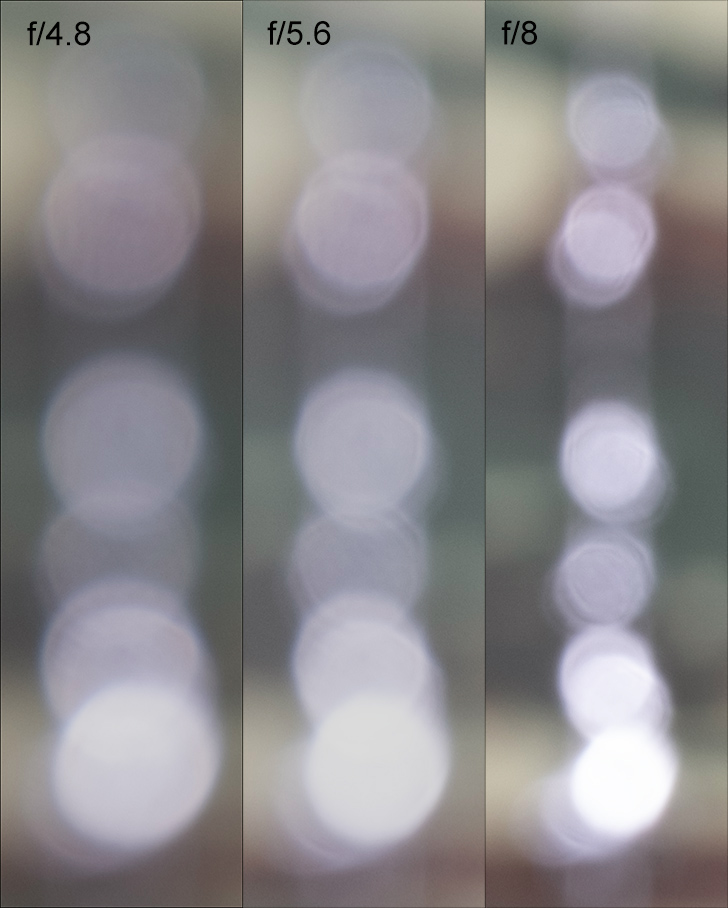
When looking at the highlight rendering across the whole image field, the disc shape is mostly intact at f/4.8 already. This is unusual. Typically, we can observe a deterioration towards “cat eyes” here. A more edgy aperture shape is, however, already visible from f/5.6.
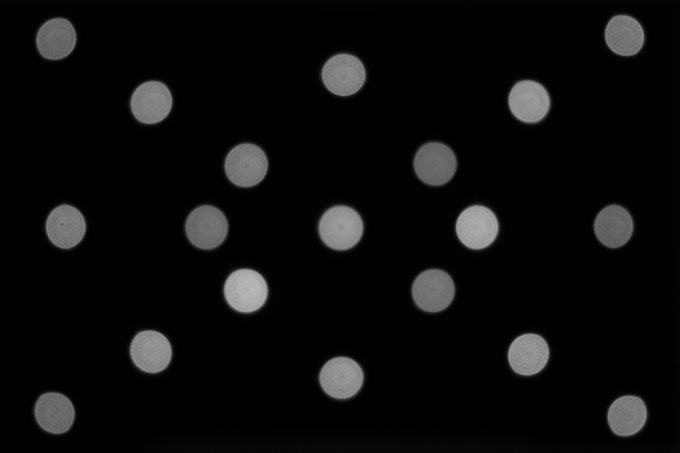
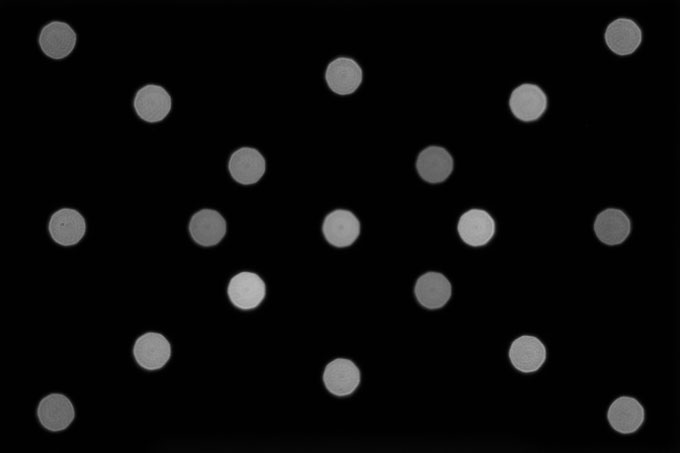
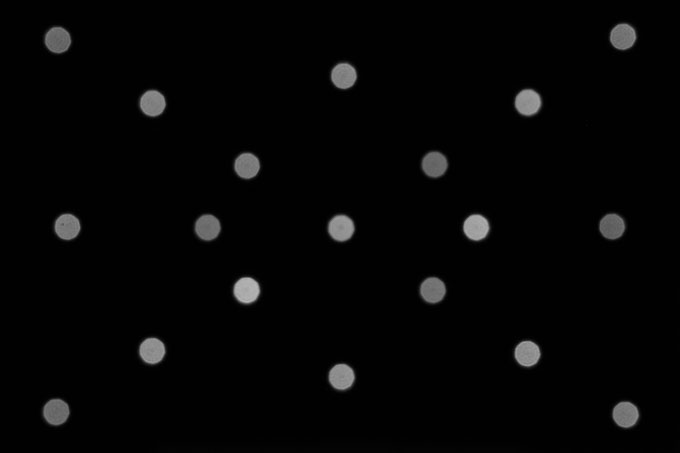
The rendering quality in the focus transition zone is not ideal. The image crop to the left shows an unsymmetrical blur plus a slight haziness. The less interesting foreground blur (to the right) is better but still a bit “shadowy”.
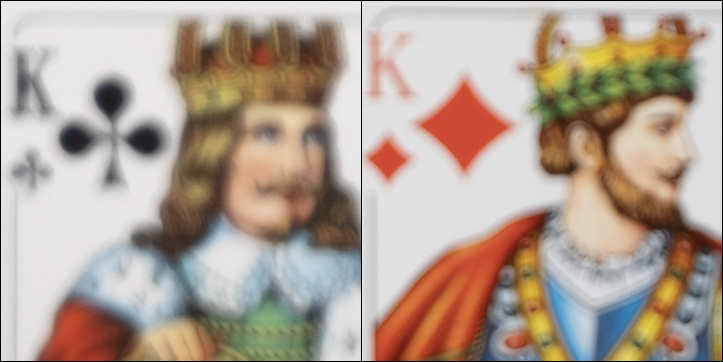
Below is a crop of a real-world image (can be downloaded from the gallery as well). While tree leaves are probably among the most difficult “things” to render, it’s rather clear that this isn’t ideal.
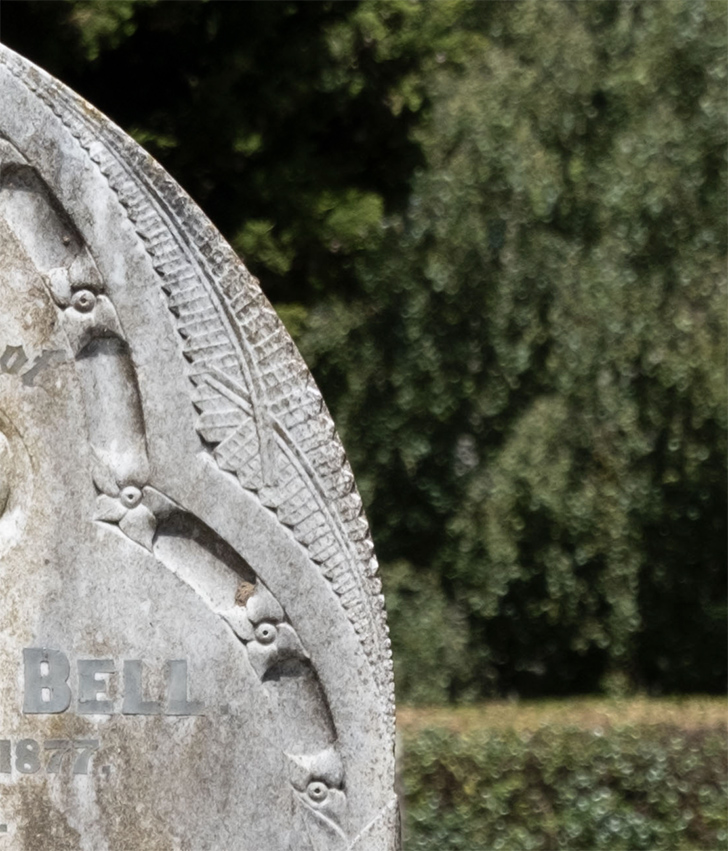
Sun-Stars
Sun stars are an aperture effect that occurs around strong light sources – such as lamps in nighttime images. The image sequence below shows how the Fujifilm lens performs at 16mm. The effect isn’t present at large f-stops, simply because the aperture is circular or near-circular at least. Traces of rays start to emerge at f/8, but you have to stop down to f/16 for the maximum effect. Even so, sun stars are very subdued and not pointy. So, if you are after this effect, this is not the best lens for the job.
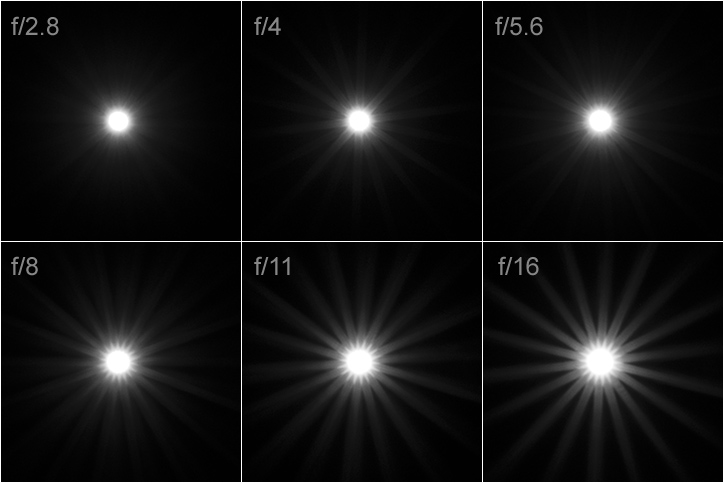
Competition
There are 2 main competitors in this lens and price class – the Tamron 17-70mm f/2.8 Di-III A VC RXD (center below) and the more affordable Sigma 18-50mm f/2.8 DC DN (to the right below). As you can see below, the Tamron lens is quite different in size – especially when extended to 70mm. The Sigma lens is pretty comparable in size & weight. And both 3rd-party lenses manage to keep the f/2.8 aperture throughout their zoom range. However, neither is as weather-sealed as the Fujinon XF 16-50mm f/2.8-4.8 R LM WR, and they don’t offer internal zooming either. Their optical performance is on par (Sigma) or better (Tamron), though. In terms of pricing, it all depends on how you’d purchase the Fujifilm lens. In a kit, it’s very affordable. Less so, if you buy it separately.
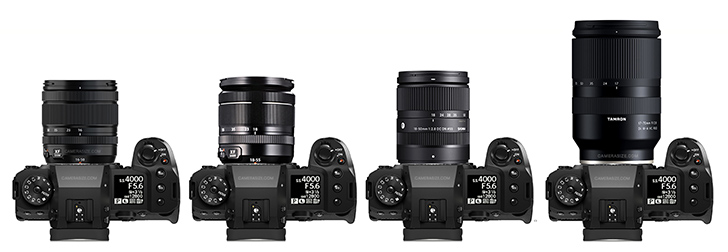
Sample Images
Generally, we were pleased with the Fujinon XF 16-50mm f/2.8-4.8 R LM WR during our time with it - both with respect to the lab results and especially in the field. That is with the exception of the rather massive centering defect when we first received it - which was subsequently repaired. Centering problems in Fujifilm zoom lenses seem to be a bit of a theme (...), so always check yours after purchasing. The lens may not be the sharpest knife in the kitchen, but it's still sharp for a (kit-) zoom lens. Technically, it doesn't show any major weakness throughout the zoom range. The field curvature is a bit high at the wide end, though, so stopping down is advisable if you want to have sharp corners in your scene. Just like most modern mirrorless camera zoom lenses, there's a high degree of image distortions and vignetting, so keeping auto-correction activated for JPEGs or in your favorite RAW converter is a good idea. If there is one aspect that we didn't really like about the optical characteristics, it is the bokeh. With its max aperture of f/4.8 @ 50mm, the lens is hardly optimized for shallow depth-of-field photography to start with, but in such scenarios, the out-of-focus rendering can be rather nervous. It also doesn't like sun stars.
An aspect that sets the lens truly apart from other zoom lenses is its very compact size - including internal zooming - and very low weight. This and the extensive weather sealing make it ideal for "outdoorsy" use cases when you want to minimize your gear. Despite the low weight, it doesn't feel flimsy in any way or form. The AF motor is also plenty fast enough for a standard zoom lens. You may debate Fujifilm's decision to omit an optical image stabilizer, but then many Fujifilm cameras provide IBIS these days and for standard zoom lenses that's perfectly fine.
Overall, there's much to like here - at least when purchasing the lens as part of a camera kit. For whatever reason, Fujifilm discounts the lens heavily when purchased in a kit - equivalent to a $400 USD net price - compared to an individual price tag of a whopping $700 USD. The latter seems very steep compared to the similar-priced but faster third-party alternatives. If you are interested in the lens only, you should probably wait for a sales event.
-
Optical Quality
-
Build Quality
-
Price / Performance (kit)


